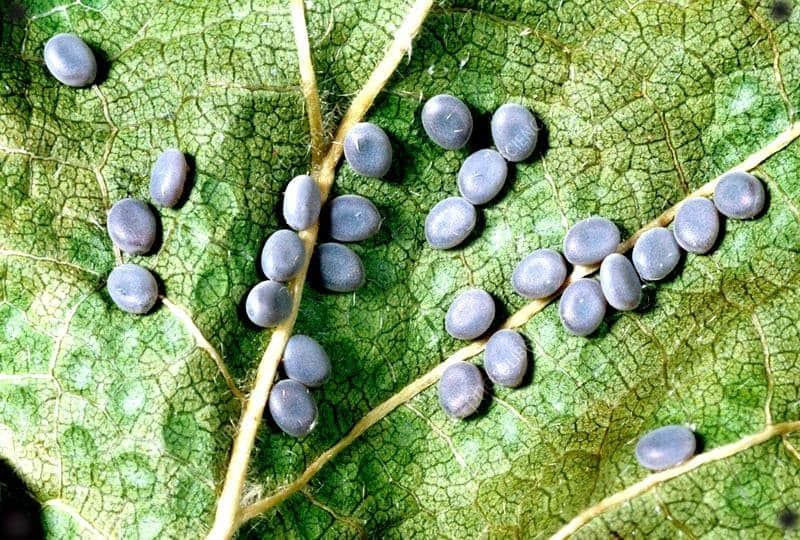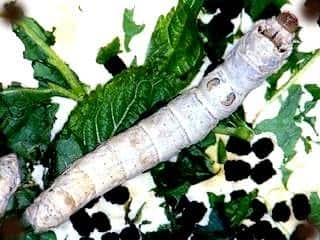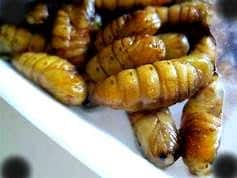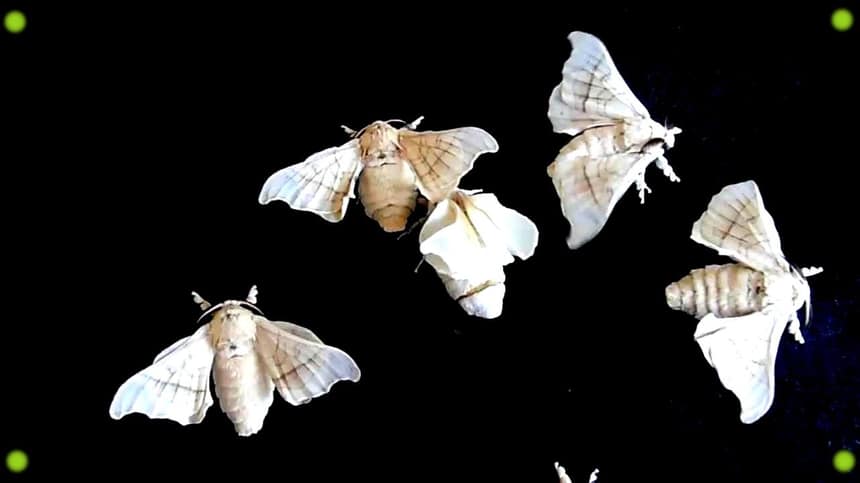Sericulture Rearing of Silkworm - Explained Process, FAQs
Introduction
Silk has been under use by human beings for various purposes since the ancient time. Pure silk is one of the finest and most magnificent natural fibers of the world and is said to be “the queen of fibers”. Silk clothes have a look and feeling of delicacy that no other cloth can have. Due to its immense value and adequacy, there have been many attempts in maximum parts of the globe for the large- scale production of silk.
Rearing of mulberry silkworm
The mulberry silkworm is the most common category of domesticating silkworm. The caterpillar eats leaves of mulberry. All of the silkworm breeds reared till now, belong to the Bombyx mori species, which are known to be ancestors of the Mandarin silkworm, known as Bombyx mandarina.
There are many kinds of mulberry silkworms, namely of Japan, China, Europe or Indian origin based on geographical location.
They are also differentiated on the bases of the number of generations or the number of times they reproduce in a year under natural conditions or also on the number of molts during growth of larval stages.
Also read -
- NCERT Solutions for Class 11 Chemistry
- NCERT Solutions for Class 12 Chemistry
- NCERT Solutions for All Subjects
Mulberry silk
The silk we get from this kind is yellow or white in coloration. This silk is of the finest quality available around the globe. The silk is made up of single long fibers. It is purified than other kinds of silk. The 100% mulberry silk products are one of the most reliable and deluxe silk goods. Few of the most popular advantages of silk from mulberry is that it is 100% natural, odor free and allergy free. Mulberry silk contains a natural protein which helps get rid of allergies, therefore bedding of mulberry silk is a healthy and right choice for those who are more allergy prone.
Morphology and life cycle of Bombyx mori
Silkworm undergo a process of metamorphosis from egg to the adult stage by two intermediate stages of larva also called as caterpillar and pupa also known as cocoon
Eggs
The egg is round in shape and white in coloration, surrounded by chorion. The egg has only one micropyle situated towards the anterior pole, from where the sperm enters inside. The respiratory channels are in the shape of funnels which become small in size as they go inside, and are distributed in big numbers through the entire surface of the egg except the micropyle. Cytoplasmic surface is known as periplasm and the nucleus is situated in the anterior pole.

Larva
The caterpillar after hatching from the egg measures in the length of 5 to 7 mm. Their body surface is quite wrinkled and somewhat dull grayish in color. The larval body is split up into head, thorax and the abdomen.

Pupa
The pupal stage or more precisely it is also known as inactive or resting stage as in this stage the insect is unable to feed. In this phase, the pupa undergoes a huge number of definite changes which takes place inside the body. In this stage the new form of adult moth take place by the complete revolution of internal organs. Soon after the process of pupation, the pupa is white in color and soft in texture but slowly turns into brown color and the pupal texture becomes rigid or tough.

Adult
The adult moth emerging from the pupal stage is not capable of flight. The adult does not eat during its short life span. The body of the moth like that of the larva is composed of three segments same the head, thorax and the abdomen. Just like the butterfly the body is covered by scales. The eyes are situated on either side of the head which are compound. The ocelli are absent. The antennae are large and bi pectinate in appearance.

Silkworm breeding
Female and male moths mate only for few hours after their birth and start laying eggs. The sexes are separate and the sexual dimorphism is quite clear. The males are smaller in size and tender in texture where as the females are bigger in size and stout. Both the males and females do not feed. The females have a life span of 2 to 3 days, on the other side the males have even less days to live and sometimes die during copulation. There is no need for further mating. One moth lays 400 to 500 eggs depending upon the atmospheric conditions and supply of nourishment.
Read More: NCERT solutions for Class 7 Chemistry Chapter 3 Fibre to Fabric
Process of rearing of silkworm
Rearing by shelf rearing method: rearing of silkworm in round bamboo rearing trays arranged one over the other in tiers on rearing stands is called shelf rearing. A stand can accommodate 10 to 11 trays and therefore, this method provides economy of space but requires more labor for handling so many trays. Larvae are fed on chopped mulberry leaves in this method.
On the basis of selected instar stage, rearing can be done in any of the one stage of development
- Young age rearing
- Late age rearing
Out of the two, young age rearing is the most preferred one.
Silkworm rearing house
Rearing houses are planned and constructed to maintain and provide proper environmental conditions to ensure good quality of cocoons. The rearing house is designed based on brushing capacity and the method of rearing.
Each rearing house should have
- A main rearing hall and
- Leaf preservation room
Generally, three types of rearing are known: shelf rearing, shoot rearing, and floor rearing. In shelf rearing, rearing trays of consecutive sizes are arranged on stands with 8 to 10 tiers. Shelf rearing is economical best method because in less area, maximum number of eggs can be reared.
It is a rat proof building with net all around to prevent rats from entering the building. The building should have good amount of light and proper ventilation.
The rearing house is partitioned into four convenient rooms, out of which one must have high temperature and humidity for rearing of the young age silkworms.
The rearing houses are designed for effective disinfection, like smooth surface of walls, use of lime white wash, facility for the making building airtight, less reactive to disinfectants and
washable smooth floor.
Silkworm rearing equipment
Rearing stands: rearing stands are made of wood or bamboo and are portable for transportation. The trays are arranged on the shelves and each stand can accommodate 10 rearing trays. 6 stands are sufficient for each rearing room.
Ant wells: ant wells stop ants crawling on to trays and attacking the silkworms. They are made of concrete or stone blocks and each block bears groove at center. Water is poured in to groove to stop the ants. Each stand leg must be put on ant well.
Rearing trays: these are reared to rear silkworm and are usually made of bamboo so they are light and easy to handle.
Paraffin paper: this is thick craft paper coated with paraffin wax with a melting point of 55oC. It is used to rear early- stage silkworm.
Chop sticks: these are made of bamboo approximately 17.5 cm long, thin and tapering to one end. Direct handling of the young age silkworm is to be avoided for hygiene reasons.
Feathers: bird feathers are used for brushing the delicate newly hatched worms on the rearing bed.
Chopping board: chopping knives are used for the cutting of mulberry leaves. Now a days power operated chopping machines are used.
Leaf chamber: mulberry leaves are stored in leaf chamber made from wood. The chamber is covered on all the sides with wet gunny cloth to prevent leaf withering.
Cleaning nets: these are made of cotton thread or nylon. They have different sized meshes to suite the size of larvae.
Montage: these are used as a support for the silkworms to spin cocoons. They are made from bamboo strips and mat. The ripe worms, who are about to spin cocoons are transferred on this mat.
Silkworm cocoon extract
When the silkworm is fully grown its appetite fails and starts moving restlessly finding a place for spinning the cocoon. At this stage worms should be mounted on chandrica. Extreme care is necessary during mounting as it will affect reeling qualities of cocoon. Overcrowding of the worms on the mat should be avoided. The rooms should be well ventilated and its temperature should be kept between 70 to 75oF for spinning. The proper relative humidity is between 60 to 70%.
Silkworm egg storage
The period of incubation for eggs begins when the eggs are taken out of cold storage. Maintenance of proper temperature and humidity is extremely important during incubation. The optimum temperature for incubation of eggs is about 73.5 to 77oF. Required humidity for all the eggs is 75 to 80%. For incubation, the eggs are spread on piece of paper in the rearing tray. In order to stimulate eggs to hatch all the same time, they are regularly and evenly stroked with feather a day before they are due to hatch.
Also check-
- NCERT Exemplar Class 11th Chemistry Solutions
- NCERT Exemplar Class 12th Chemistry Solutions
- NCERT Exemplar Solutions for All Subjects
NCERT Chemistry Notes: